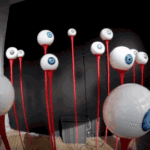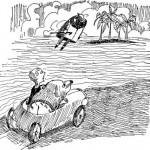In which I explain what the heck it is I'm doing.
It has been a long time since my first introduction to this site. A lot has changed, including the name, my purpose and my topics. I guess it’s time to explain why the site is called HackText and what the point of all this is.
When the blog started, I didn’t understand that the word I wanted to use was transmedia. The concept of building a universe around a narrative, one that is additive, not repetitive. A universe of connected narratives that could appeal to all the senses by taking advantage of the unique media platforms on which they could be build.
As I explored, read and researched using transmedia as my lens, I discovered a number of perceptions of transmedia as a concept:
- Both the media and individuals really want to use transmedia methods in their storytelling.
- People were calling the franchising of content (reusing the same content over multiple formats) transmedia.
- Most seemed to be more interested in fracturing a narrative and scattering it over media platforms then actually creating an additive experience.
- Narrative doesn’t only infuse transmedia concepts, it infuses everything, but people seemed to be missing it.
- Few seem to be fully taking advantage of any media platform, video, interactive or otherwise.
- Those who did try to fully take advantage of the various platforms available rarely met with commercial success.
- There is an ever expanding number of tools and platforms for both creating and consuming texts, but, mostly, we keep publishing the same plain options.
What is a text?
I could try and rephrase this, but Wikipedia just does it better:
A text … is a coherent set of symbols that transmits some kind of informative message. This set of symbols is considered in terms of the informative message’s content, rather than in terms of its physical form or the medium in which it is represented.
Simply put, in the context I’m using a text is the composition of the basic symbols we use to communicate in the form of a narrative.
Why would I want to hack a text?
There are a number of good reasons to hack a text. For one thing, we are stuck in a rut. We have an ever-growing potential to revolutionize the way we create and consume narratives and we just don’t. Even worse, when the rare person makes an attempt, he seems to get shunned. When we get beyond the buzzword, most transmedia attempts lean towards franchises and, even within the multiple storytelling elements, rarely are the media forms used to their full potential.
Part of the new purpose of this blog is to explore (and sometimes test) the ways we can break these traditional media formats open and build transmedia elements on top and inside of standard texts, allowing greater interactivity and building hooks into texts that reach out into the crossing narratives that make up a transmedia world.
Besides that, well-hacked texts can be profitable, especially online, where SEO is a hugely important field and, when done well, builds narrative just as ably as any other technique.
How can we start hacking a text?
Well, that’s what I intend to discover. I believe that there is an overarching set of narrative concepts and techniques that can be applied to texts to create better transmedia. One of the first principles of this theory is narrative artifacts. I hope to discover or research these basic concepts and use them to build up new methodologies for expanding texts with modern technology.
Oh and I hope to apply them, here and elsewhere.
Why Hack Text and not Text Hacker?
The title of this site is an exhortation! Go out and hack text!






























